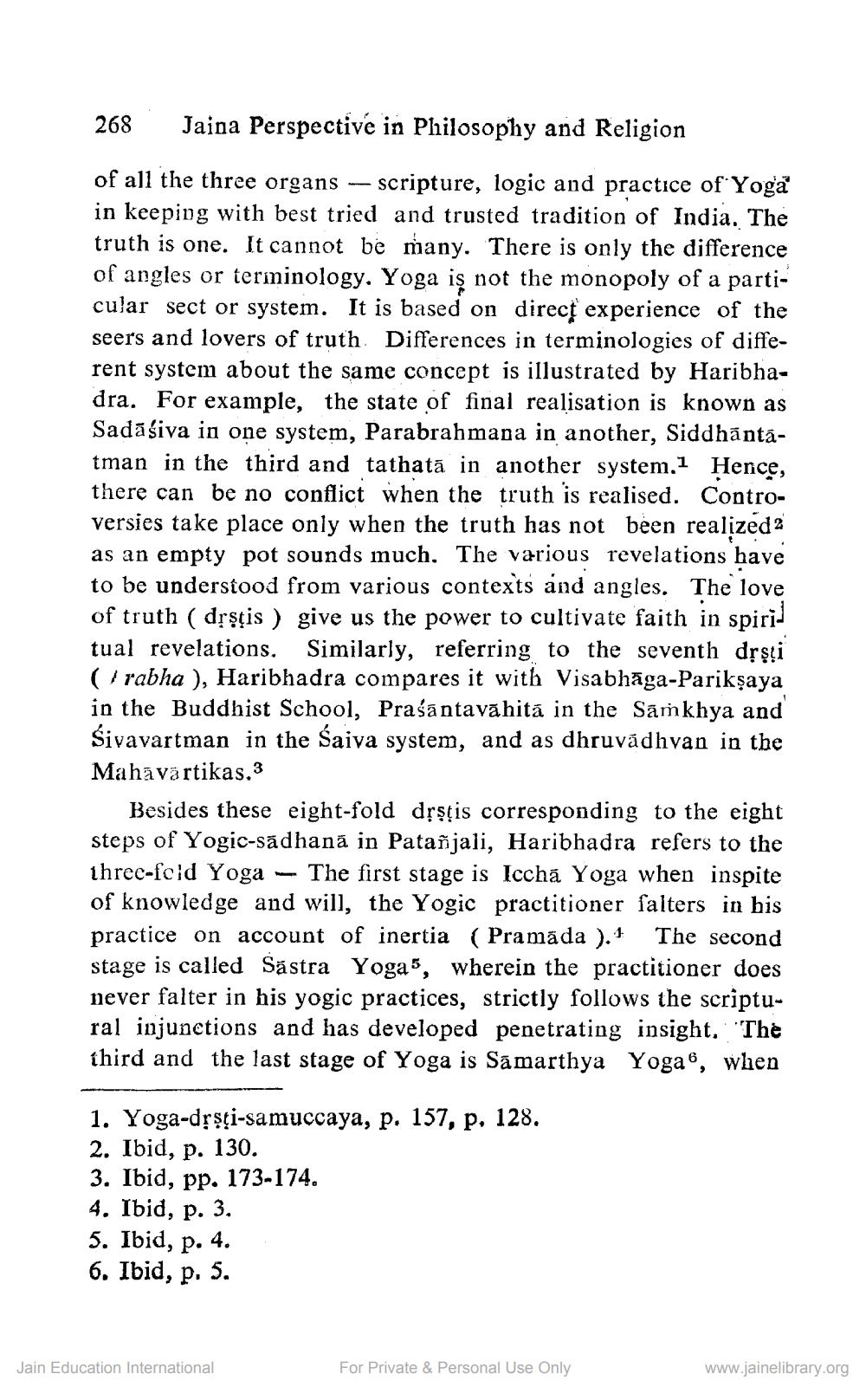________________
268
Jaina Perspective in Philosophy and Religion
of all the three organs - scripture, logic and practice of Yoga in keeping with best tried and trusted tradition of India. The truth is one. It cannot be many. There is only the difference of angles or terminology. Yoga is not the monopoly of a particular sect or system. It is based on direct experience of the seers and lovers of truth Differences in terminologies of different system about the same concept is illustrated by Haribhadra. For example, the state of final realisation is known as Sadāśiva in one system, Parabrahmana in another, Siddhāntatman in the third and tathatā in another system.1 Hence, there can be no conflict when the truth is realised. Controversies take place only when the truth has not been realized 2 as an empty pot sounds much. The various revelations have to be understood from various contexts and angles. The love of truth ( drsţis ) give us the power to cultivate faith in spirid tual revelations. Similarly, referring to the seventh dạşi ( / rabha ), Haribhadra compares it with Visabhāga-Parikşaya in the Buddhist School, Prasantavāhitā in the Samkhya and Sivavartman in the Saiva system, and as dhruvádhvan in the Mahāvārtikas.3
Besides these eight-fold dặşțis corresponding to the eight steps of Yogic-sadhana in Patañjali, Haribhadra refers to the ihrec-fcid Yoga - The first stage is Iccha Yoga when inspite of knowledge and will, the Yogic practitioner falters in bis practice on account of inertia (Pramada ). The second stage is called Sästra Yoga5, wherein the practitioner does never falter in his yogic practices, strictly follows the scriptural injunctions and has developed penetrating insight. The third and the last stage of Yoga is Samarthya Yoga6, when
1. Yoga-drsţi-samuccaya, p. 157, p. 128. 2. Ibid, p. 130. 3. Ibid, pp. 173-174. 4. Ibid, p. 3. 5. Ibid, p. 4. 6. Ibid, p. 5.
Jain Education International
For Private & Personal Use Only
www.jainelibrary.org




